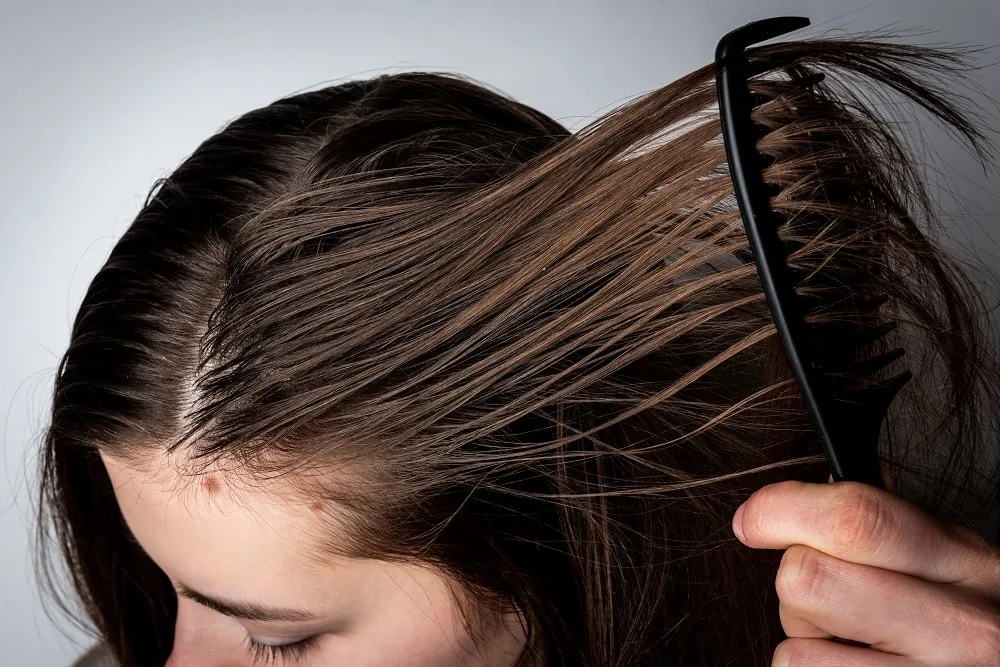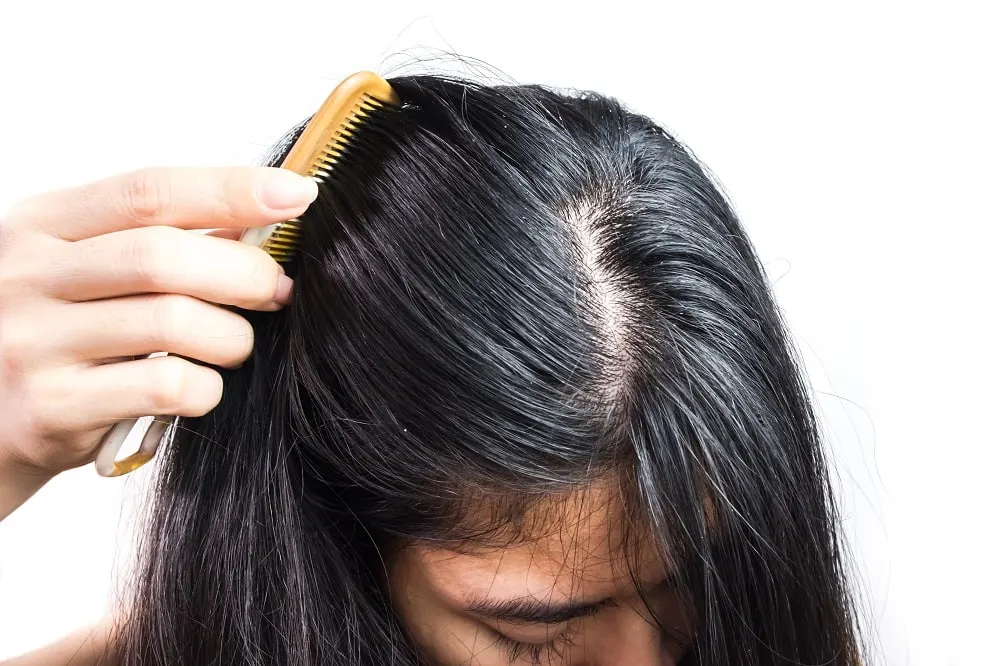Greasy hair is a major concerning issue for hair-conscious people as it makes hair lifeless. As opposed to shiny hair cause this is the type of hair that everybody would love to have as it is a sign of healthy hair.
But how can you tell the difference between greasy and shiny hair? Read below to find out what each looks like and to understand the difference.
What Is Greasy Hair?

Greasy hair is when there is a build-up or overproduction of sebum. Sebum is an oil produced by the sebaceous gland, and its job is to protect the hair follicle from losing moisture. Sebum is crucial to healthy, shiny hair. However, too much oil can make your hair greasy.
When you wash your hair, you are cleansing it of all dirt and grime, but you are also stripping it of necessary oils. Once the oil is washed and rinsed from your hair, the glands will make more. It can become a vicious cycle. Washing your hair more frequently to get rid of the oils can cause your hair to produce more oil.
Greasy hair can be a bigger problem than just looking dirty. Hair with a build-up of oils can make your hair weak and prone to breakage and split ends.
If you are battling greasy hair, be patient and try to wash your hair less often. It will eventually get used to the new washing routines and produce less oil.
What Is Shiny Hair?

Shiny hair is generally healthy hair. Shiny, healthy hair has enough oil to give it the right amount of moisture but not too much that it builds up and looks greasy.
Shiny hair is typically smooth and silky looking throughout the hair. It will look reflective and shiny from roots to ends. You won’t usually see much, if any, breakage or split ends with healthy hair. If your hair is healthy and shiny, keep it up.
What Does Greasy Hair and Shiny Hair Look Like?

There are a few key differences in the appearance of shiny and greasy hair. It can be hard to tell if your hair is shiny or greasy because they can look similar. However, greasy hair will feel oily, whereas shiny hair will feel smooth and silky.
Greasy hair can look a little dirtier than shiny hair. The oil build-up can make your hair clump together and look darker than its natural color. You can combat greasy hair with dry shampoo or wash it less often. It may be difficult not to wash your hair when it looks greasy, but it should adapt soon.
Shiny hair looks smooth and lays flat on your head. It reflects light to give the hair a shiny look.
Major Differences Between Shiny and Greasy Hair
There are several differences in how shiny and greasy hair looks and feels. Look and touch can be indicators of shiny or greasy hair. Shiny hair is generally healthy, but greasy hair is prone to breakage and an itchy scalp.
One of the biggest differences between shiny and greasy hair is the way it feels. Shiny hair will feel smooth and silky without feeling oily. Greasy hair will feel oily. You can tell by running your fingers through it. Your fingers may feel oily or greasy after touching your hair.
Another major difference is the look of hair. Greasy hair will clump together and look darker than your normal color. On the other hand, shiny hair will look like a mirror reflecting light. It appears light and bouncy.
Both shiny and greasy hair can lay flat on your head, but there is a big difference in how they lay flat. Greasy hair will look matted down with no volume, and styling may not help give it life. Shiny hair will lay flat and smooth, but it can also have bounce and body. Styling can help shiny hair to have more body and shape.
Greasy hair can make your scalp itchy, almost like dry hair. However, your greasy hair has the oil build-up you will not see from dry hair. Shiny, healthy hair will not make your head itchy or feel oily to the touch.
Shiny hair will look shiny and healthy all the way through your hair. Greasy hair may look shiny or adversely dry at the ends, but closer to the roots will give it away. Oily hair will clearly show the build-up and signs of greasy hair. Even though it is a problem that starts at the roots, it can harm your hair down to the ends.
Greasy and shiny hair can have several similar qualities, but the difference can be the line between healthy and damaged hair. It is crucial to understand when your hair is too greasy and needs some intervention. Things like dry shampoo, washing less frequently, and specific hair treatments can help take away unwanted oil.
|
Greasy Hair |
Shiny Hair |
| Feels Oily |
Feels Smooth & Silky |
|
Looks Clumpy and Darker |
Looks Light and Bouncy |
|
Matted, No Volume |
More Volume & Shape |
|
Itchy Scalp |
Normal Scalp |
|
Build Up & Oily Roots |
Shiny and Healthy Hair |
So, How Can You Tell the Difference Between Greasy and Shiny Hair?
The easiest ways to tell the difference between greasy and shiny hair are the look and feel of your hair. Although these two hair types can look similar, there are a few signs that will give them away.
Greasy hair can look clumpy, have no body, and feel oily to the touch. Shiny hair is healthy. It is smooth and reflective. If you notice greasy hair, there are several remedies you can try to bring back your shiny, healthy hair.
